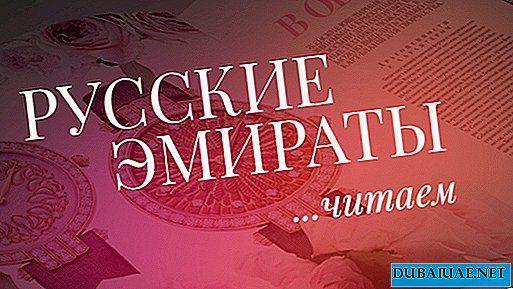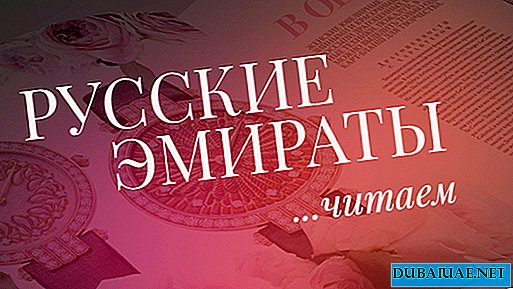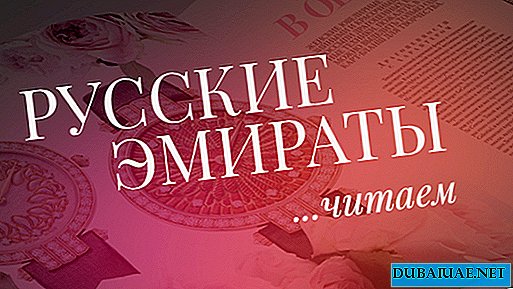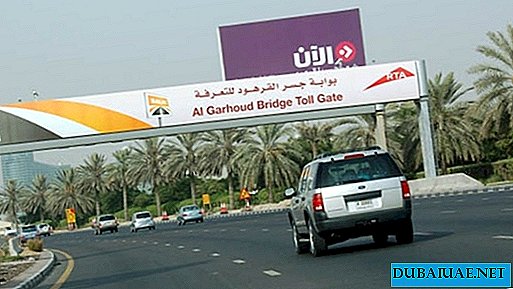 Text: Nikolai Gudalov
Text: Nikolai Gudalov IF SCIENCE IS ONE OF THE INDICATORS OF THE DEVELOPMENT OF SOCIETY, THEN AT THE TIME, THE ARAB-MUSLIM SCIENTIFIC THOUGHT WAS ONE OF THE WORLD LEADERS, MUCH OUTSTANDING EUROPE
Era
How, in the distant era of the 9th-15th centuries, the seeds of such a "fragile plant" as science could take root in Muslim society? In economic terms, after the Arab conquests in the Caliphate, the wealthy of the city also prospered. Baghdad alone counted 400 thousand inhabitants, and Egypt and Iraq in the VIII-X centuries. in terms of urban population, they were many times greater than any European country of the 19th century! Caliphs, local rulers, and private sponsors patronized science, sometimes even competing in their generosity.
The famous sponsor of the exact sciences was the Banu Musa family. Probably, his condition was replenished due to not quite honest administrative activity, but this, however, was obscured by a noble patronage of arts. The main interest of the Banu Musa family was mathematics.
Islam pushed the worldview horizons of Arabs and other peoples and assigned a place of honor to reason. In addition, this religion has always been characterized by internal diversity. The dominance of Islam in the spiritual sense also did not prevent the Arab-Muslim civilization from becoming a unique, huge "bridge" between different cultures. In the science of that time, Greek, ancient Babylonian, Persian, Indian and even Chinese elements were united. She was Arabic-speaking, but not completely Arab or Muslim - Christians and Jews, representatives of Iranian and Turkic peoples were also engaged in science. The conquest of Iran and parts of Byzantium included in the intellectual life of the Caliphate prosperous schools in which Greek scientific traditions were alive. Such were the famous centers in Gundishapur (medical school with a hospital, observatory), Nisibin, Harran, Alexandria. Thanks to large-scale and high-quality translation work, by the 9th century, the Arabs became aware of all the most important works of Aristotle, Plato, Euclid, Archimedes, Ptolemy, Galen, Hippocrates, Dioscorides. The largest translators - Christian Arab Hunayn ibn Ishaq, Greek Kusta ibn Luka, Sabit ibn Kurra, who left the mysterious community of admirers of the Moon - were themselves original scientists.
Many rulers themselves were interested in science - examples of Caliph Mutadid or the famous Ulugbek, who built the observatory near Samarkand, are known. In society as a whole, comprehensively educated and educated people - udba - were highly valued. Often, among udba there was even a “fashion” for ridiculing common stereotypes. Prototypes of research centers and scientific schools have been actively developed.
At special "houses of science" there were rich libraries that everyone could use. Caliph al-Mamun (813-833) founded the famous House of Wisdom in Baghdad. Although it is not entirely clear what its importance and exact functions (library, academy or translation center) were, its fame has been preserved for centuries.
Researchers of that era, as befits true scientists, questioned a lot and fought against pseudoscience: for example, one of the largest doctors, Abu Bakr Muhammad ar-Razi, criticized the preference in his works - alas, still not outdated! - which many people give to scammers in front of professional doctors. Scientists refused to blindly bow even to ancient authorities. With this, as well as with the practical orientation of scientists to study the world around them, there is also a desire to conduct experiments.
When the caliph al-Mamun read in ancient writings about the length of the earth's circumference, he did not accept the data on faith, but asked the mentioned Banu Musa to certainly check them. The measurements were carried out with particular meticulousness and proved the correctness of the old astronomers, but the caliph ordered to repeat them elsewhere in order to exclude possible errors.
Names and Achievements
 The philosophy of that era was very diverse. It is noteworthy that philosophical argumentation even penetrated into religion. A group of theologians called mutazilites proclaimed that a person was given the opportunity to make an informed choice. Proponents of Ismailism considered the divine principle of the world so transcendental that the attention of a person was shifted to the study of the concrete surrounding reasonable reality. The Sufis saw the world as a book of divine signs, which to be read in many ways by means of mathematics ... So religious reflections could push towards a rational, "earthly" explanation of the world from itself. Even more conservative theologians were forced to resort to philosophical arguments. This is an example of one of the greatest Muslim thinkers - Abu Hamid al-Ghazali (X-XI centuries).
The philosophy of that era was very diverse. It is noteworthy that philosophical argumentation even penetrated into religion. A group of theologians called mutazilites proclaimed that a person was given the opportunity to make an informed choice. Proponents of Ismailism considered the divine principle of the world so transcendental that the attention of a person was shifted to the study of the concrete surrounding reasonable reality. The Sufis saw the world as a book of divine signs, which to be read in many ways by means of mathematics ... So religious reflections could push towards a rational, "earthly" explanation of the world from itself. Even more conservative theologians were forced to resort to philosophical arguments. This is an example of one of the greatest Muslim thinkers - Abu Hamid al-Ghazali (X-XI centuries).
But the most curious figures were followers of Greek thinkers. If in Europe at that time philosophical disputes were almost entirely conducted within the framework of Christianity, then in the Muslim world a powerful philosophical impulse developed outside of religion. Abu Yusuf al-Kindi (VIII-IX centuries) was the first major philosopher - an Arab by origin. Al-Kindi clearly stated: there is nothing shameful in using the knowledge of other peoples to search for truth. He focused on philosophy, science, and science. An outstanding encyclopedist was Abu Nasr Muhammad al-Farabi (IX-X centuries), who was awarded the title "Second Teacher" (after the "First" - Aristotle). He believed that the judgments of philosophy are absolutely true, and began to separate science from art and craft. Al-Farabi believed that the soul of a wise person can merge with the global "active intelligence", and insisted on the rational organization of the whole society.
One of the greatest philosophers and physicians in history has become Abu Ali al-Husayn Ibn Sina (X-XI centuries), known in the West as Avicenna and deserving the title "argument of truth." In his opinion, the material world is of great importance. Individual things may be random, but together they are connected in a single chain of causes that a person is called to know. Ibn Sina set up elementary experiments in the field of physics and medicine.
Abu Bakr Muhammad Ibn Bajja (XI-XII centuries) studied the problems of dynamics, came very close to the concept of energy conversion and even outlined a prototype of evolutionary theory. Abu Bakr Muhammad Ibn Tufail (XII century) painted a panoramic picture of human development. Having originated from water and land, a person passes from gathering to hunting, then to cattle breeding, studies nature, reaches the fundamental principles of the universe, and, finally, tries to enlighten other people - albeit with little success. Abu al-Walid Muhammad Ibn Rushd (Latinized name - Averroes, XII century) insisted on the value of a reasonable, evidence-based knowledge of the world. According to him, since Allah is not a tyrant, but acts according to the rational harmony of the world, then the earthly ruler must also obey the law.
Brilliant flowering reached mathematics and astronomy. Only extant astronomical works of Muslim authors, there are ten thousand! In the VIII-IX centuries. lived Abu Abdullah Muhammad al-Khwarizmi, to whom we owe the very word "algebra" (as well as "algorithm" - by the name of a scientist) and using a ten-digit calculus system called Arabic.
What numbers the Arab scientists could operate, the following fact shows. In antiquity, four perfect numbers were found, that is, natural numbers equal to the sum of all proper divisors: 6, 28, 496, 8128. Arabic mathematicians added the following: 33 500 336, 8 589 869 056 and 137 438 691 328. Each now can even read them right?
A 10th-century scholar named al-Uklidisi ("Euclidian") worked with decimal fractions. Ibn Muaz, Nasir ad-Din at-Tusi and Jabir ibn Aflah, among others, have reached heights in such a complex area as spherical trigonometry, whose active development was largely due to the need to calculate the direction to Mecca. The astronomical observations of al-Battani (IX-X century) were very accurate for their time and were used in the next eight centuries. Ibn al-Khaysam, Ibn al-Zarqallu, Ibn al-Shatir, at-Tusi offered complex additions to the astronomical teachings of Ptolemy. The calculations of Ibn al-Shatir were actually the same as those made by Copernicus a century and a half later and which changed people's ideas about the Universe! The great encyclopedist Abu Raikhan al-Biruni (X-XI centuries) also made his contribution to mathematics and astronomy, who assumed that the Earth revolves around the Sun.
In the field of physics, Ibn Sina, Ibn Baja and Abu al-Barakat al-Baghdadi (XI-XII centuries) put forward progressive amendments to Aristotle's ideas about the movement. Al-Biruni, Sabit ibn Kurra, and also a 12th-century scholar, Abd al-Rahman al-Khazini, studied leverage and the problem of balance. Scientists tried to understand the laws of flight, and several enthusiasts even tested their "aircraft." Al-Kindi, Ibn Sina and al-Biruni studied light phenomena, and doctors Hunayn ibn Ishaq and Abu Bakr Muhammad ar-Razi (IX-X centuries) - the structure of the eye. Active work with lenses had not only physical, but also medical significance. We actually owe the mentioned scientists, and especially Ibn al-Khaysamu, to the creation of optics. Ibn al-Khaysam wrote two hundred works in all fields of knowledge, and some of his ideas after six centuries even influenced Newton. The English genius admitted that he stood on the shoulders of his predecessor giants - probably Ibn al-Khaysam was one of them ...
The word "chemistry" in European languages comes from the Arabic "al-kimiya" (hence "alchemy"), although its roots go back to Ancient Greece and Egypt. Of course, the sages of that time still retained fantastic ideas about the transformation of some elements into others. But their carrying out a mass of experiments, the desire for generalization led to the discovery of new elements (sulfur and mercury) and laid the foundation for scientific chemistry. The halo of mystery, befitting an alchemist, is surrounded by the name of Jabir ibn Hayyan. One cannot even say with certainty whether this coryphaeus of alchemy was a real figure - however, a huge body of works under his name has come down to us. They reflected all the chemical knowledge and techniques of that time. In addition to the introduction of new substances (including organic ones) into the works of Jabir, the most “modern” idea of artificial generation of life, up to human life, is reflected in the laboratory. Of course, such great encyclopedists as Ibn Sina and al-Biruni, as well as the medic ar-Razi, turned to alchemy.
Finally, medicine has become one of the most developed areas of knowledge. Islam stimulated the search for a cure for diseases that are considered to be not a divine curse, but a completely overcome test. The hospitals were equipped to a high standard. So, the famous Cairo hospital Mansouri could accommodate eight thousand patients of any origin and religion, who had and did not have the means to pay for treatment. It included departments for the treatment of various diseases, as well as a library, a lecture hall, a mosque and a Christian chapel.
The story of Osama ibn Munkiz, an Arab Christian doctor who once tried to treat a European knight-crusader and a woman, gained great fame. The first he successfully opened an abscess on his leg, the second prescribed a diet. However, the European Aesculapius who succeeded him chose to follow the logic “the best pain remedy is an ax”: he simply chopped off a knight’s leg, a woman had a scalp cut on her head, and both patients died. The Arab doctor could only retire, then to tell the Muslims about the wild methods of work of the Europeans.
Among the famous doctors who left school in Gundishapur, one can name Djurgis and his son - Djibril Bakhtishu. The first treated the caliph in Baghdad, the second founded the first hospital there. One of the most famous physicians was ar-Razi, the author of a huge work called the Comprehensive Book.
Suffice it to say that it has information about 829 medicines. They say how ar-Razi chose a place to build a hospital in Baghdad. Asked to hang pieces of meat in different areas, he stopped at the area where it was least decomposed. Exceeded arRazi only Ibn Sina. According to his famous work "Canon of Medicine", European medical students studied until the 17th century! Of course, the most striking achievements listed above do not exhaust the other successes of Arabic-speaking scholars. They are the authors of systematic biological works, fundamental geographic works and accurate maps, deep ethnographic treatises (which is just a description of India al-Biruni), works in which you can find the foundations of a modern scientific view of society (for example, by Abd al-Rahman Ibn Khaldun ) The bold mind of these thinkers made the most of the wealth, diversity, openness and dynamism of the Arab-Muslim society that were available at that time. Arabic-speaking scholars not only learned, but combined and developed the vast legacy of the great ancient and ancient Eastern predecessors. Continue their journey was destined to Europeans. However, figures of this scale belong to all of humanity, and the modern Arab world and other cultures still have much to learn from them.
DIVING IN HISTORY: ARAB NUMBERS
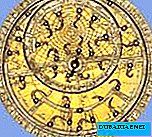 Arabic numerals were most likely borrowed in India, but a version was also advanced of Byzantine influence. For the first time, these figures were used by al-Khwarizmi in his work “On the Indian Account”, and their very use for arithmetic calculations in that era was called the algorithm. The decimal positioning system was not then unique.
Arabic numerals were most likely borrowed in India, but a version was also advanced of Byzantine influence. For the first time, these figures were used by al-Khwarizmi in his work “On the Indian Account”, and their very use for arithmetic calculations in that era was called the algorithm. The decimal positioning system was not then unique.In mathematics and astronomy, numbering was widely used, which the Arabs called "abjad" - according to the first four letters of the Arabic alphabet of pre-Islamic times (alif, ba, jim, dal). In it, each letter corresponded to a number - from 1 to 1000.
The modern order of the letters of the alphabet was fixed only during the life of the Prophet Muhammad, but their numerical value corresponded to their order in the alphabets of the ancient Semites, with the amendment that the Arabs began to use 28 letters instead of 22. This system was similar to the Greek one. With the help of the abjad, calculations, especially astronomical ones, were often recorded on the basis of the six-decimal system.
Of course, an important useful property of the decimal system introduced by al-Khwarizmi was that it is positional - that is, in it the meaning of each digit corresponds to its position. Initially, ten "imported" Indian numbers were used only to denote large numbers and were not used to write fractions, and algebraic equations were written down in words. But gradually the decimal positional system was gaining popularity in order to eventually gain dominance in world mathematics.
The path of the "Indo-Arab" numbers to Europe turned out to be difficult. The first to use them, based on the counting board he created, Herbert of Orillac - a scholar and clergyman of the X-XI centuries, the former pope (under the name of Sylvester II) in 999-1003 ...
He probably got acquainted with translations of Arabic books on mathematics and science while studying in Catalonia. However, Herbert was far ahead of his time and did not leave noticeable students, so until the 13th century, Europe was destined to use a system of Roman numerals, which made complex calculations uncomfortable.
Meanwhile, European merchants were trading with Muslims from North Africa, and some of them realized the advantage of Arabic numerals. One of them was the Leaning businessman in Pisa, who conducted business in Algeria and decided to send his son to study in Arab mathematicians.Thus, one of the leading European mathematicians, Leonardo Fibonacci, the author of The Abacus Book in 1202, in which the virtues of Arabic numbers were shown, received his education. After that, Arabic numbers began to spread in Europe.


 Arabic numerals were most likely borrowed in India, but a version was also advanced of Byzantine influence. For the first time, these figures were used by al-Khwarizmi in his work “On the Indian Account”, and their very use for arithmetic calculations in that era was called the algorithm. The decimal positioning system was not then unique.
Arabic numerals were most likely borrowed in India, but a version was also advanced of Byzantine influence. For the first time, these figures were used by al-Khwarizmi in his work “On the Indian Account”, and their very use for arithmetic calculations in that era was called the algorithm. The decimal positioning system was not then unique.
